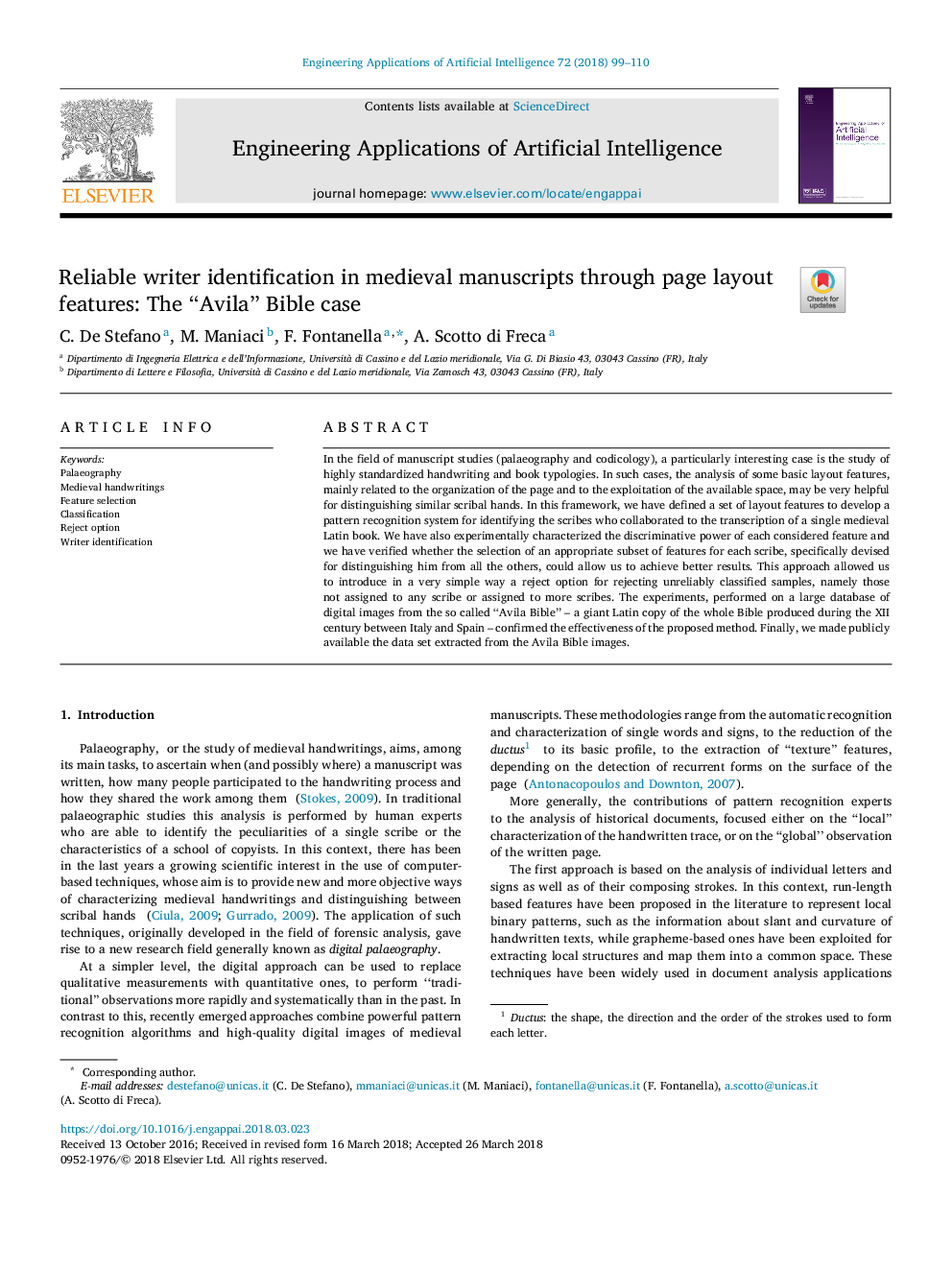| Article ID | Journal | Published Year | Pages | File Type |
|---|---|---|---|---|
| 6854171 | Engineering Applications of Artificial Intelligence | 2018 | 12 Pages |
Abstract
In the field of manuscript studies (palaeography and codicology), a particularly interesting case is the study of highly standardized handwriting and book typologies. In such cases, the analysis of some basic layout features, mainly related to the organization of the page and to the exploitation of the available space, may be very helpful for distinguishing similar scribal hands. In this framework, we have defined a set of layout features to develop a pattern recognition system for identifying the scribes who collaborated to the transcription of a single medieval Latin book. We have also experimentally characterized the discriminative power of each considered feature and we have verified whether the selection of an appropriate subset of features for each scribe, specifically devised for distinguishing him from all the others, could allow us to achieve better results. This approach allowed us to introduce in a very simple way a reject option for rejecting unreliably classified samples, namely those not assigned to any scribe or assigned to more scribes. The experiments, performed on a large database of digital images from the so called “Avila Bible” -Â a giant Latin copy of the whole Bible produced during the XII century between Italy and Spain -Â confirmed the effectiveness of the proposed method. Finally, we made publicly available the data set extracted from the Avila Bible images.
Related Topics
Physical Sciences and Engineering
Computer Science
Artificial Intelligence
Authors
C. De Stefano, M. Maniaci, F. Fontanella, A. Scotto di Freca,
